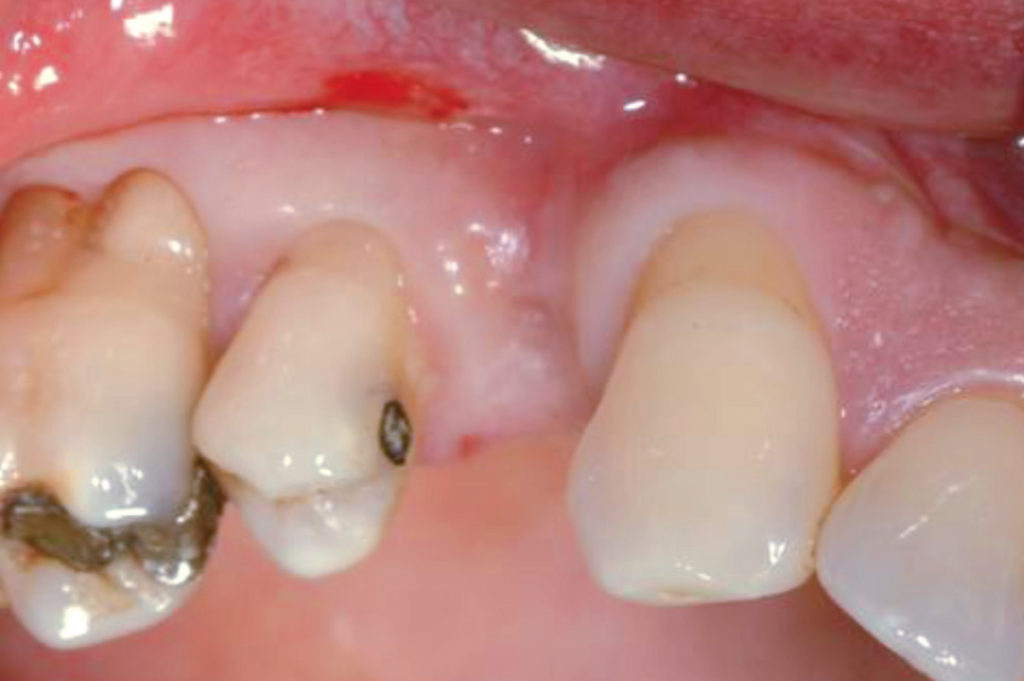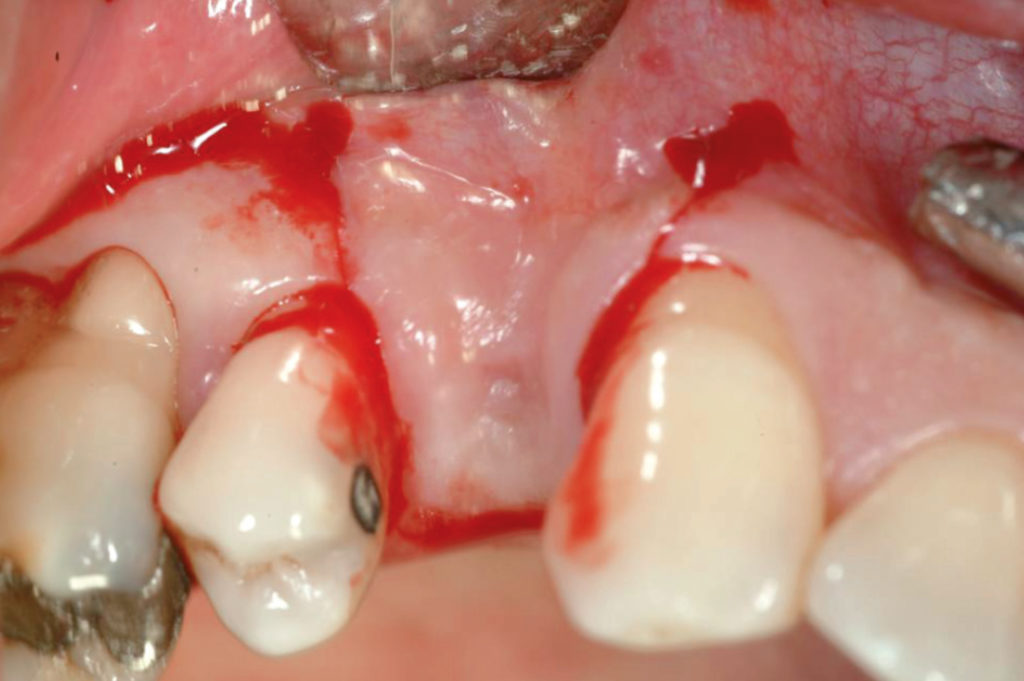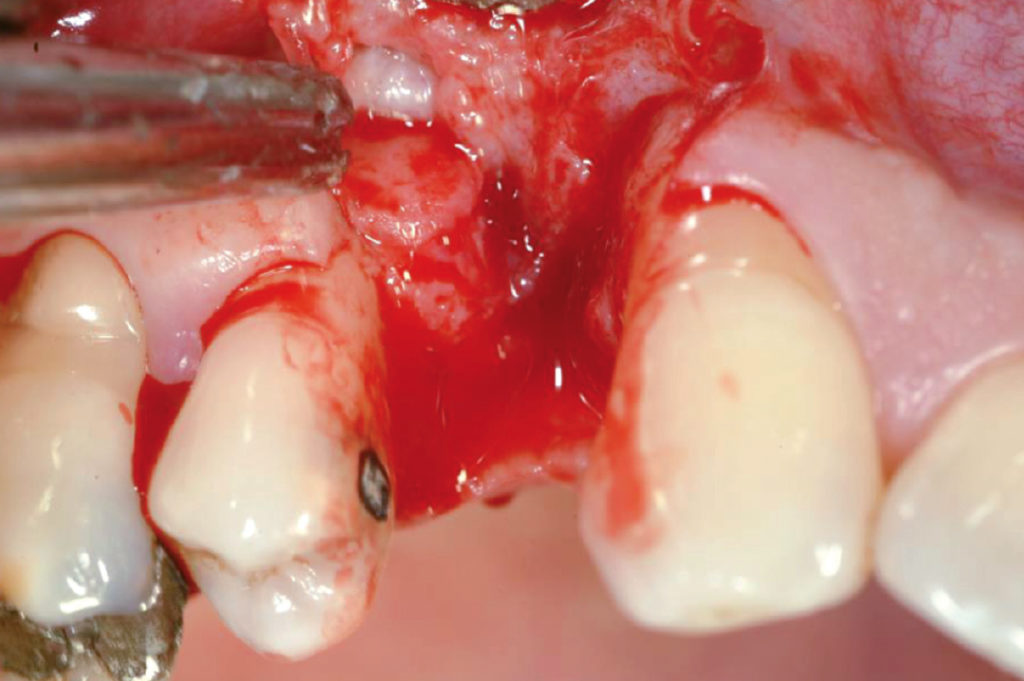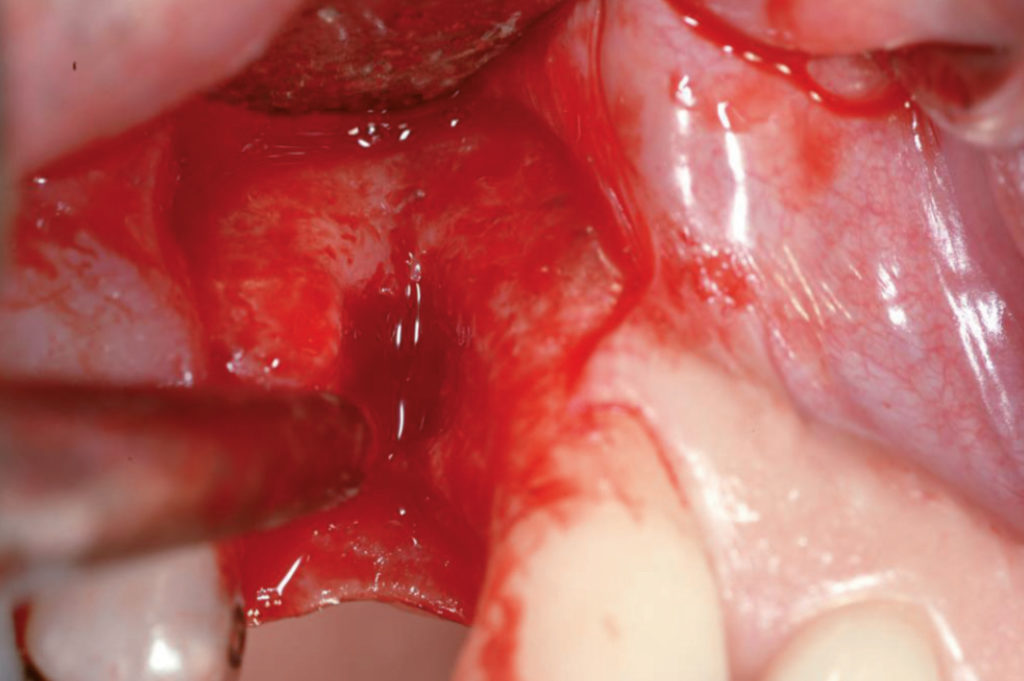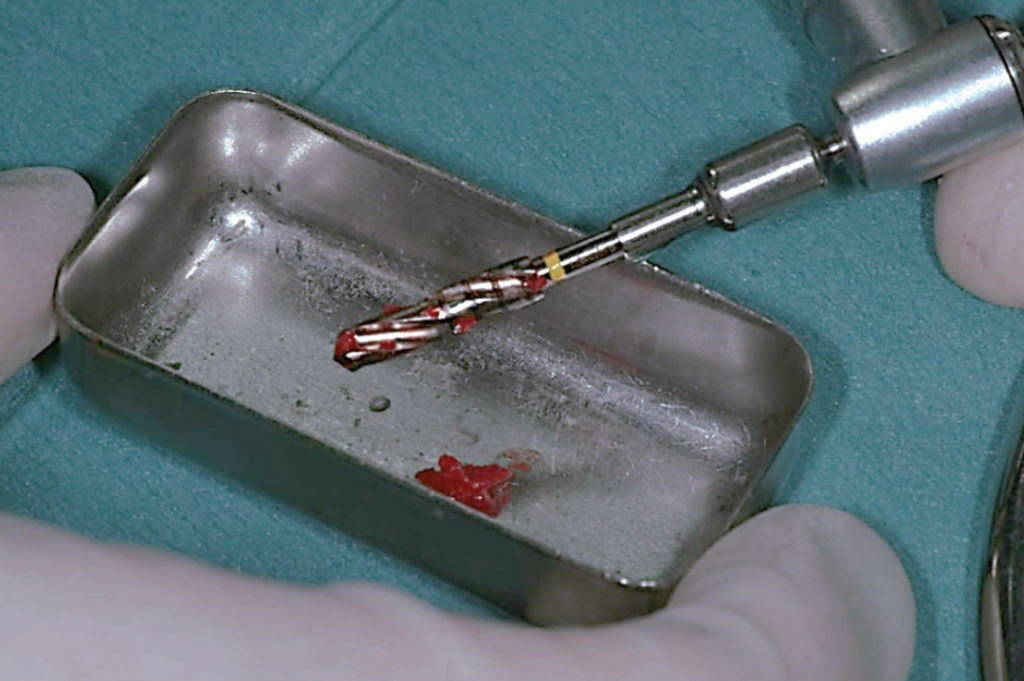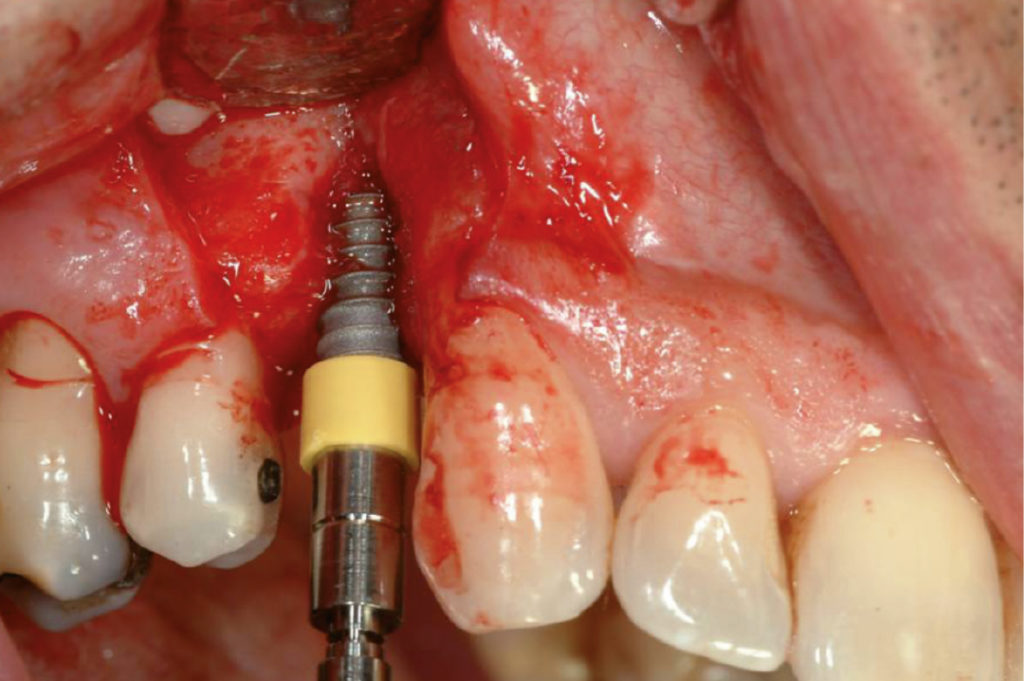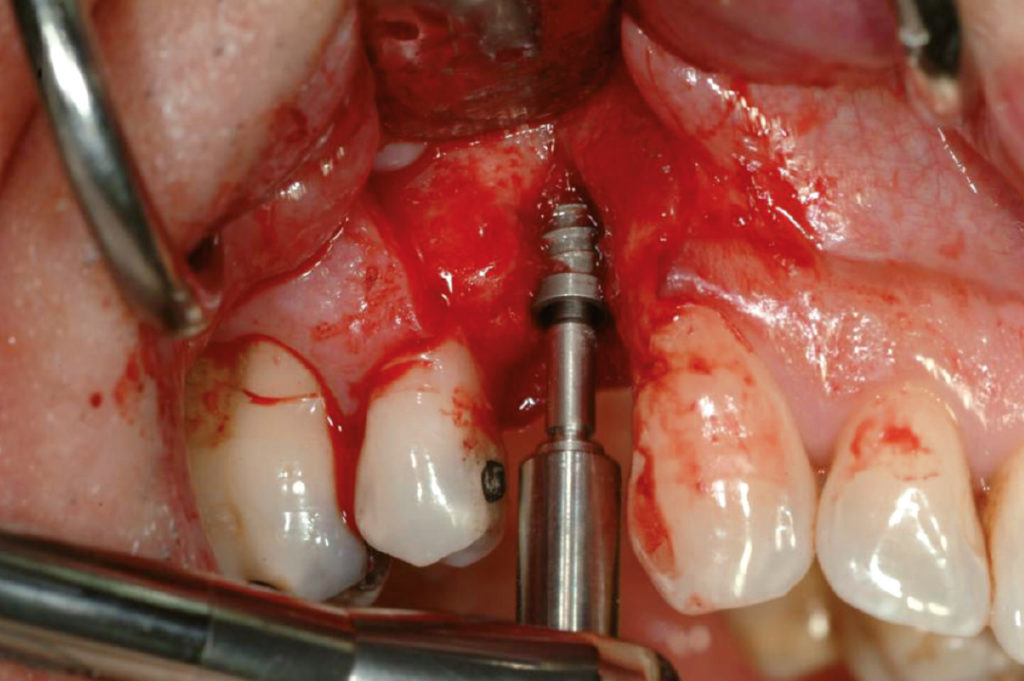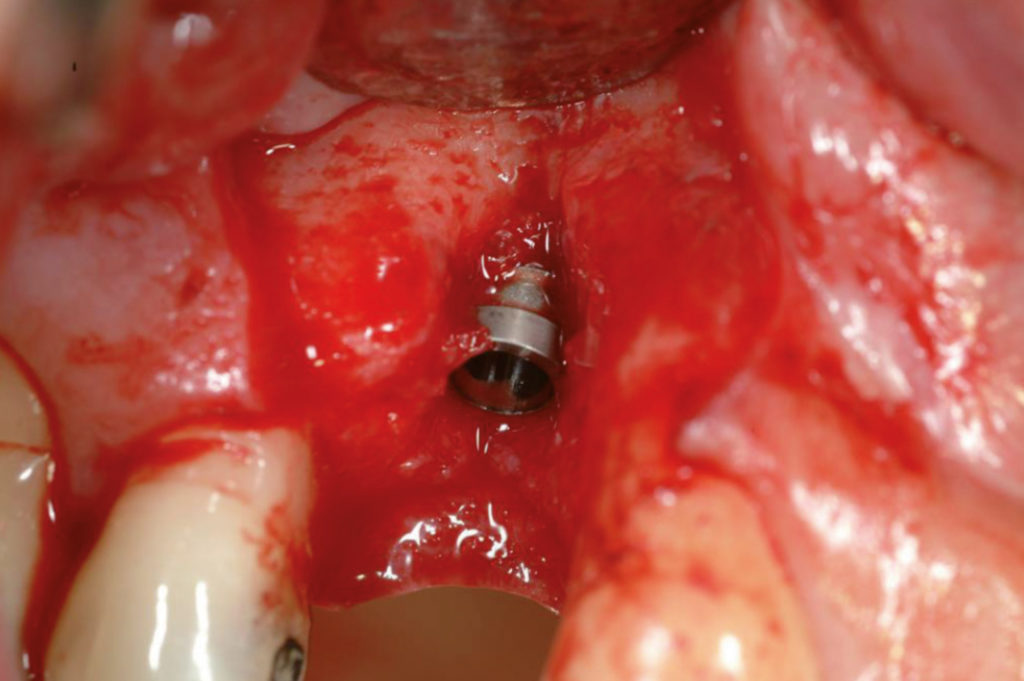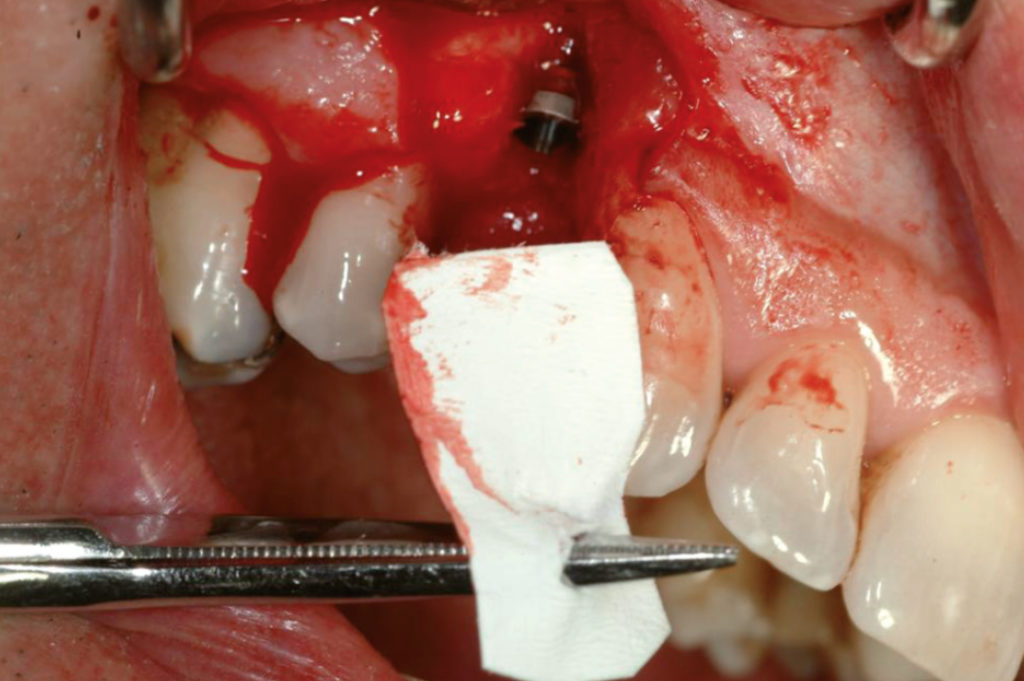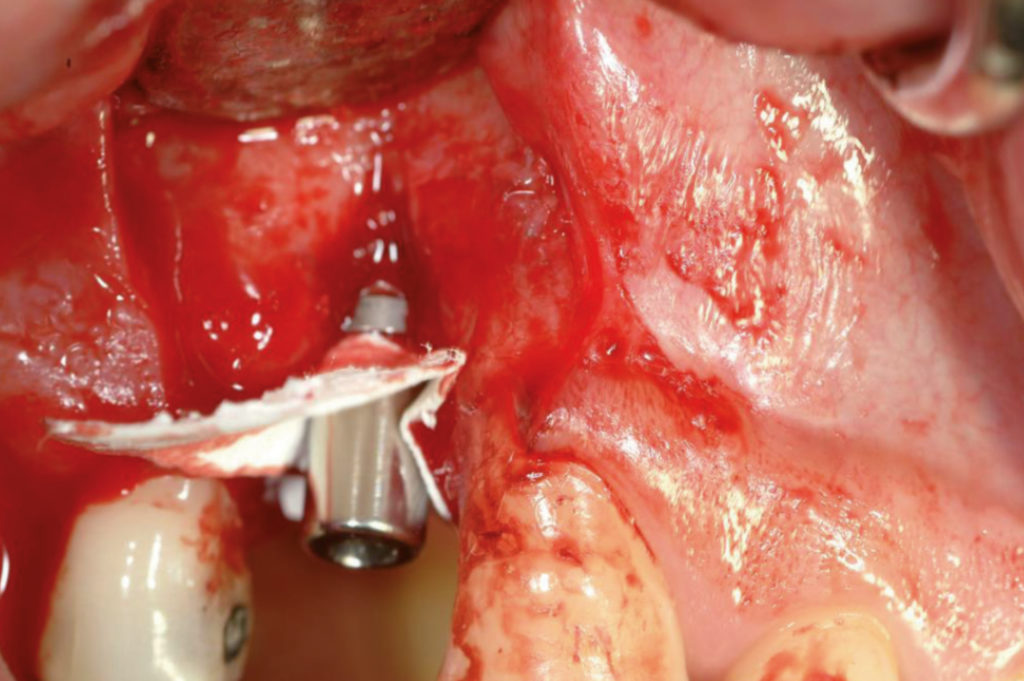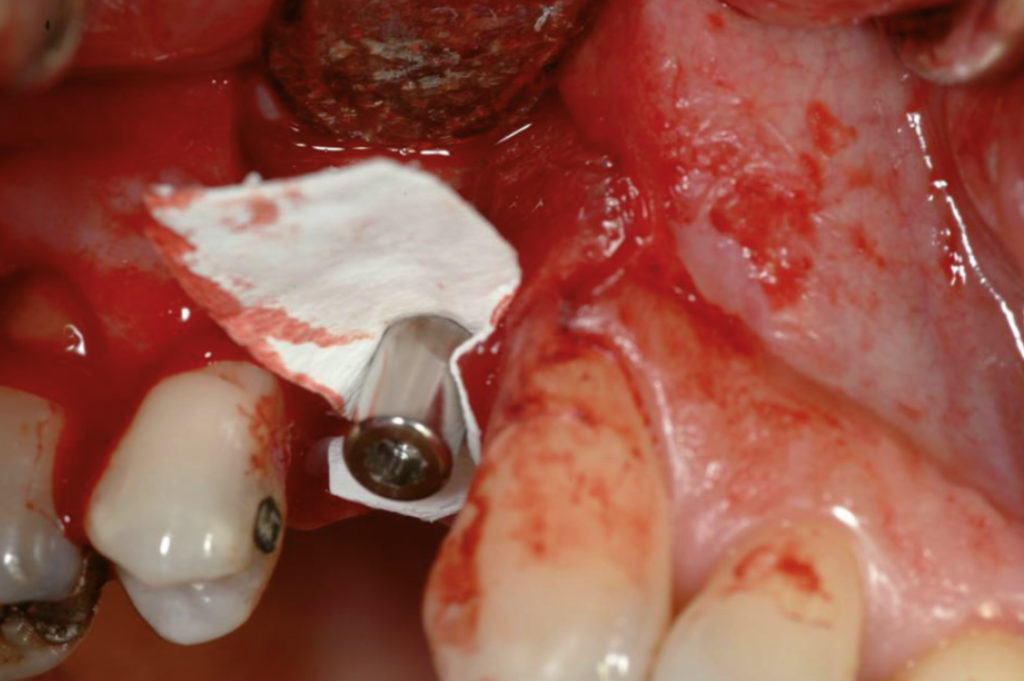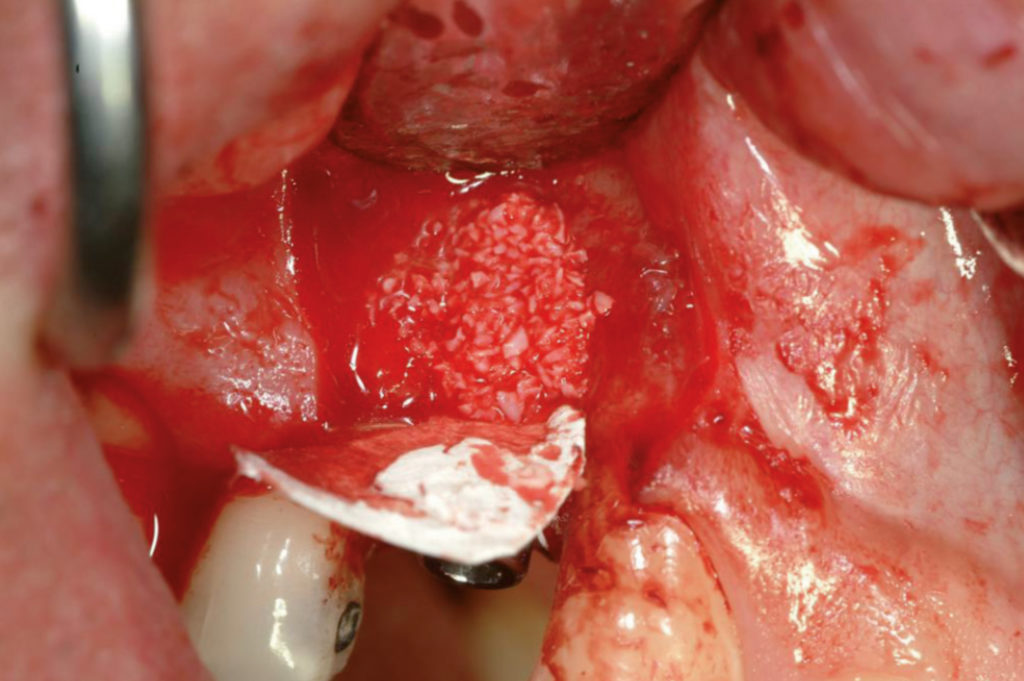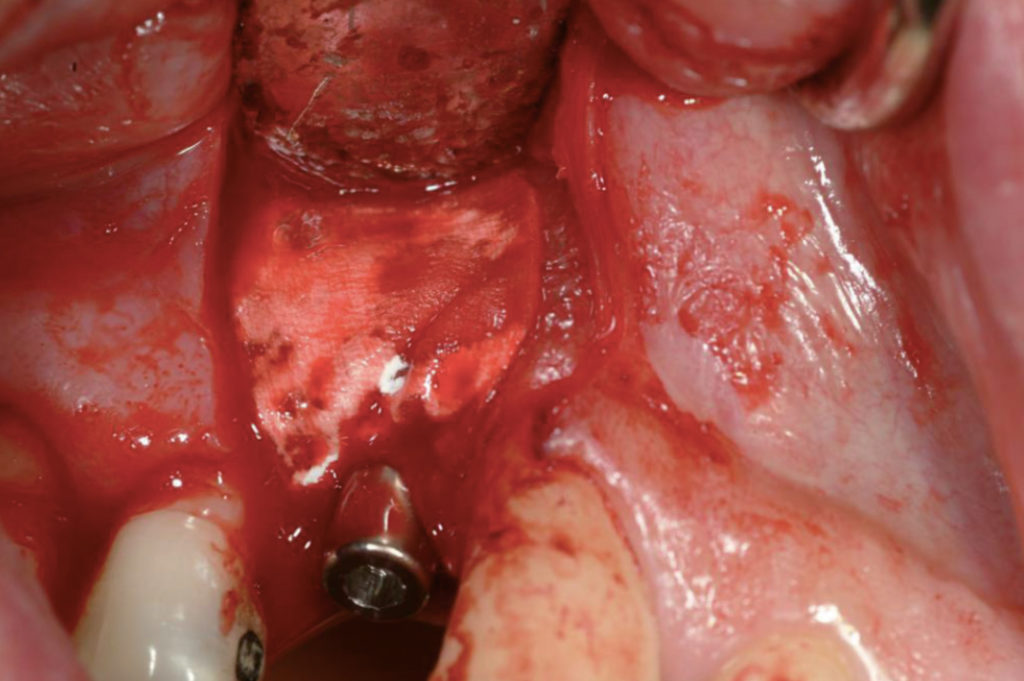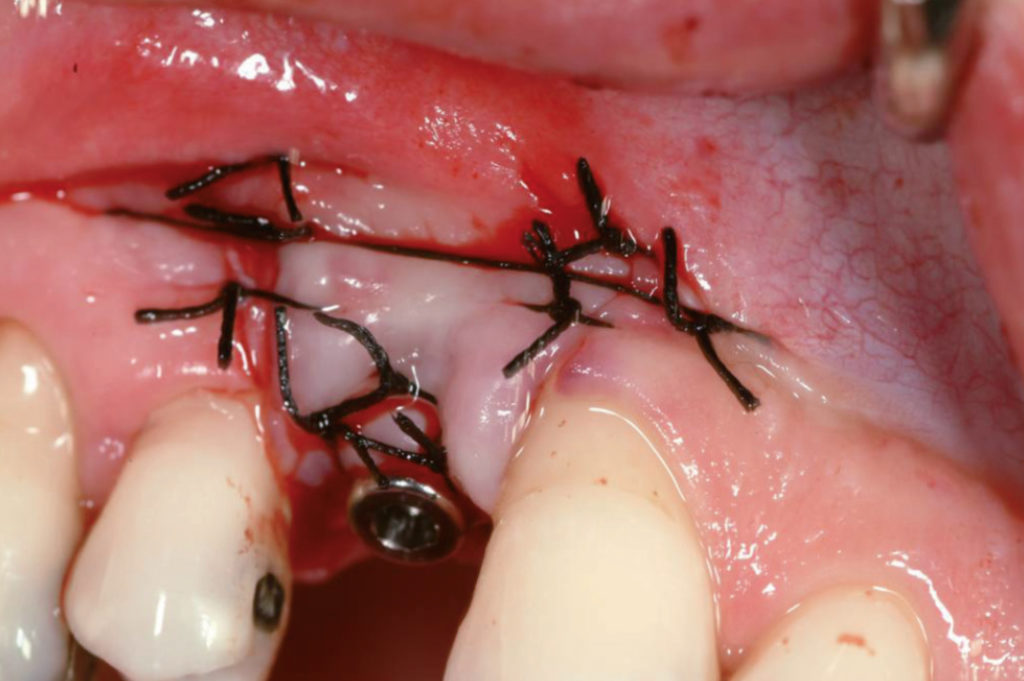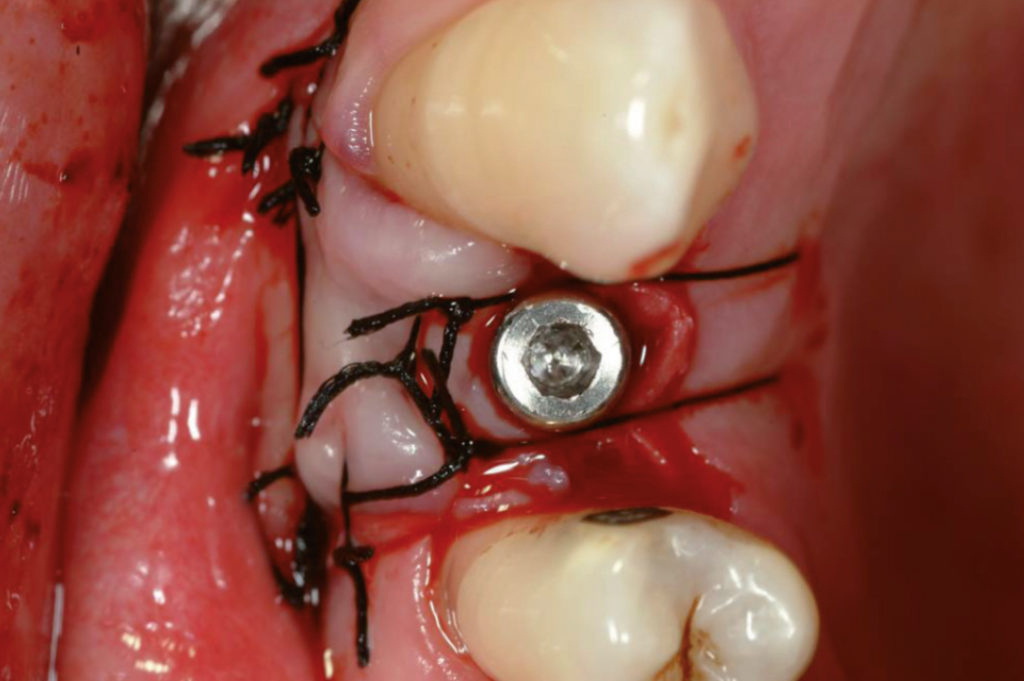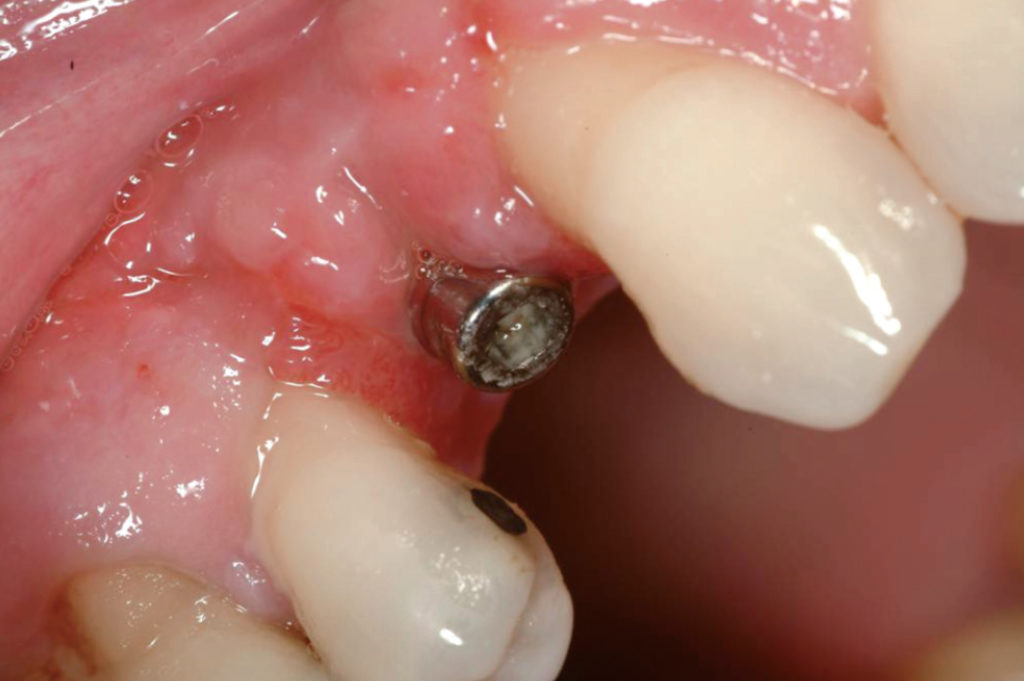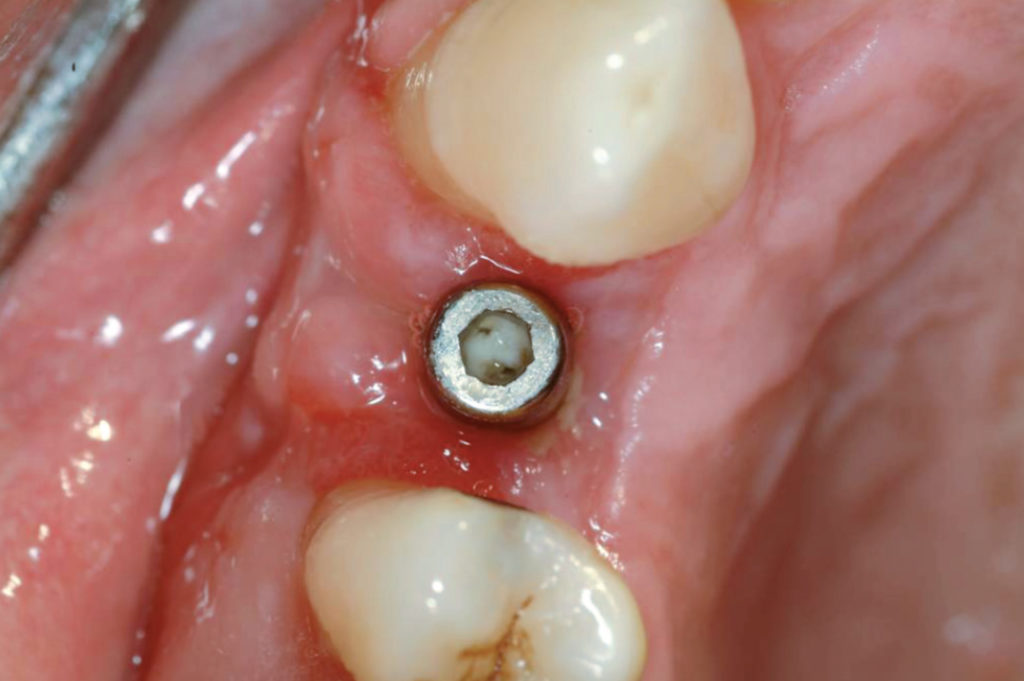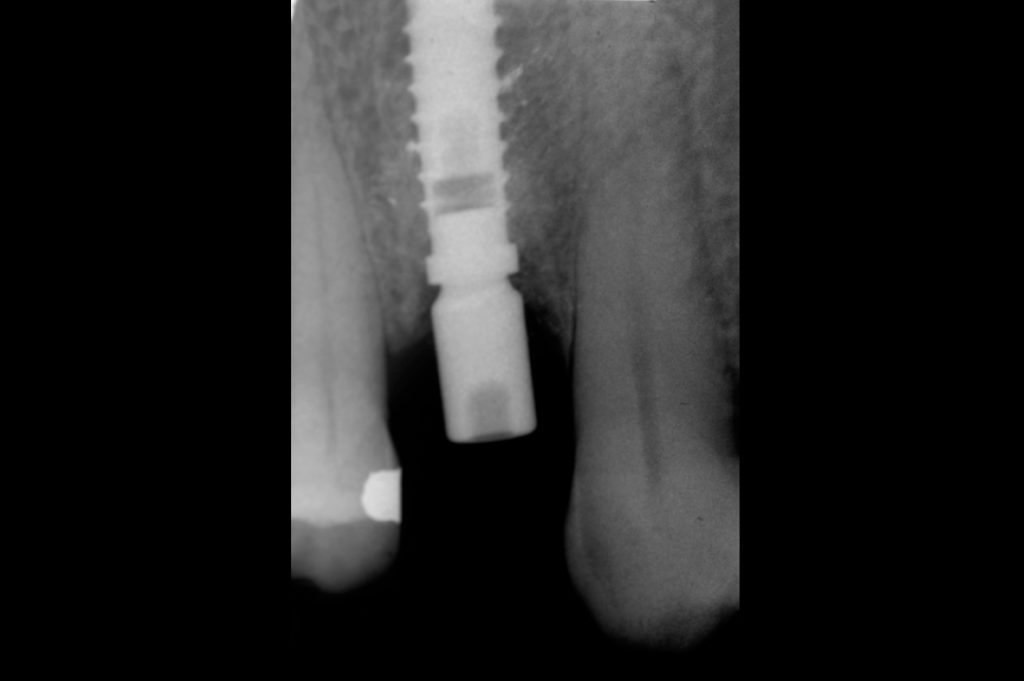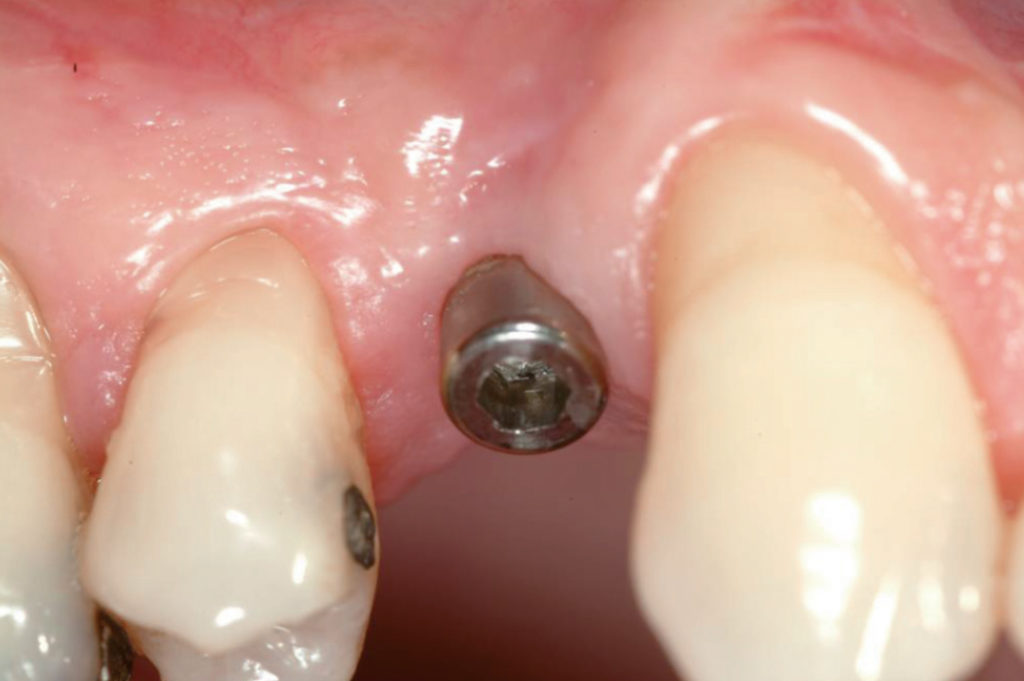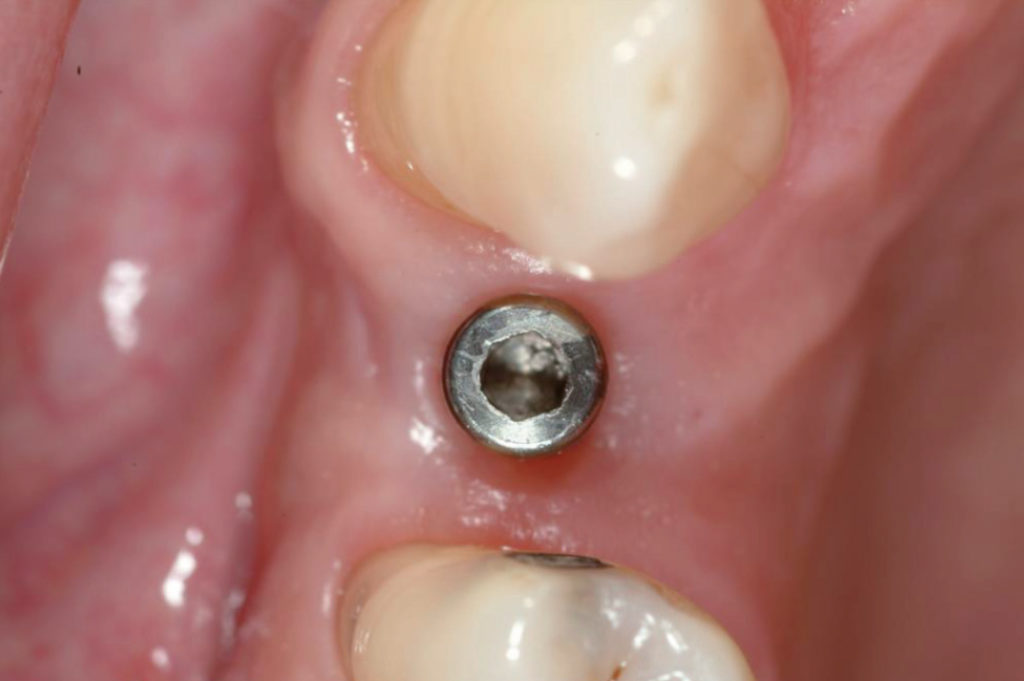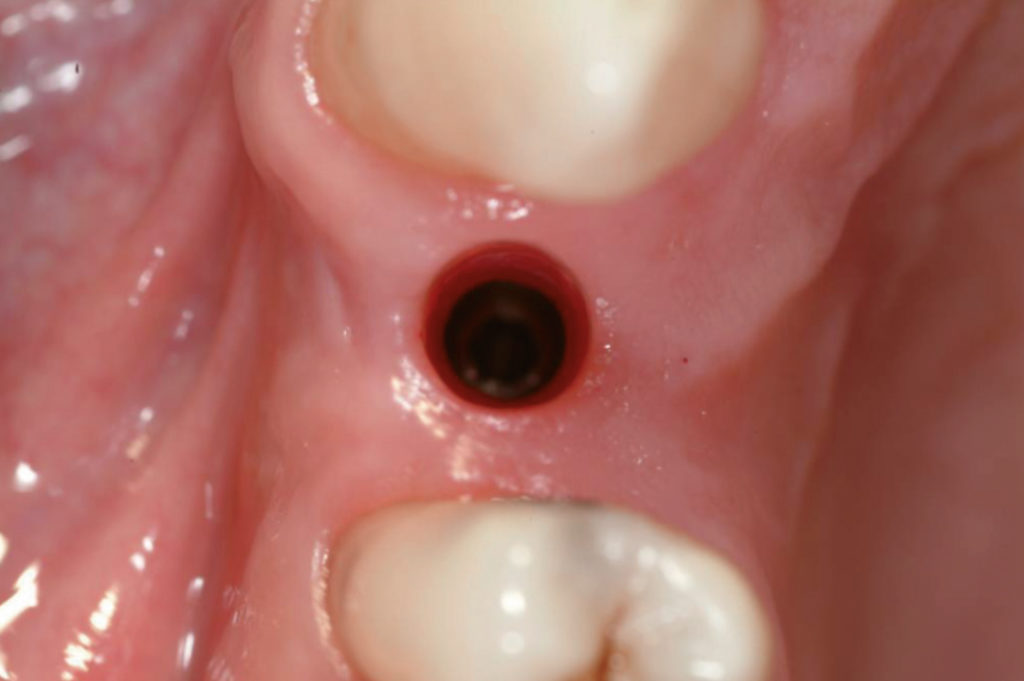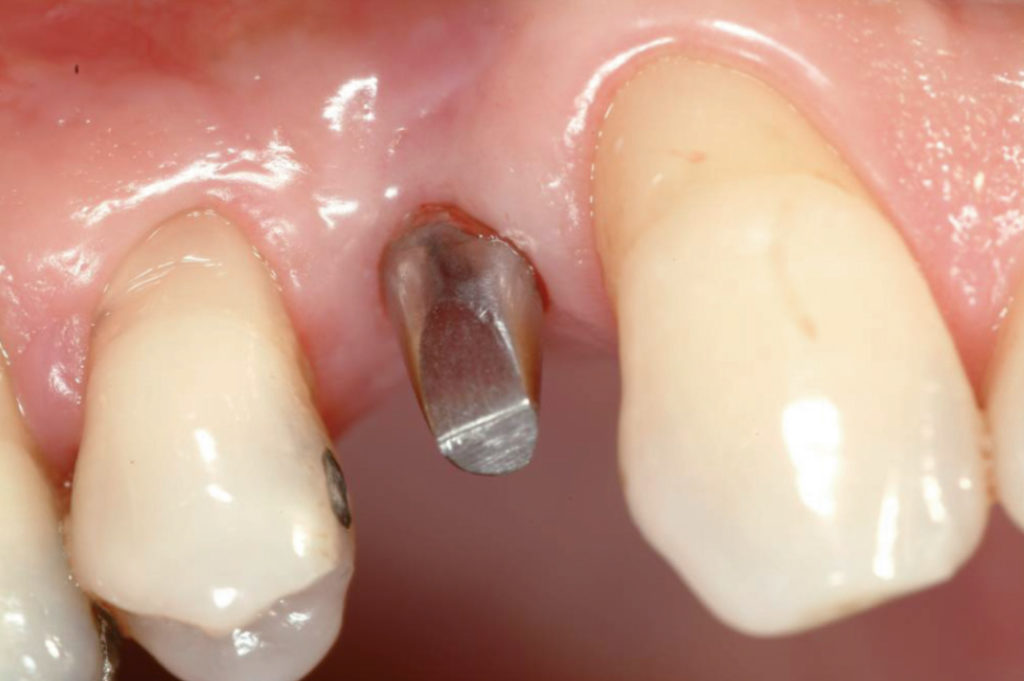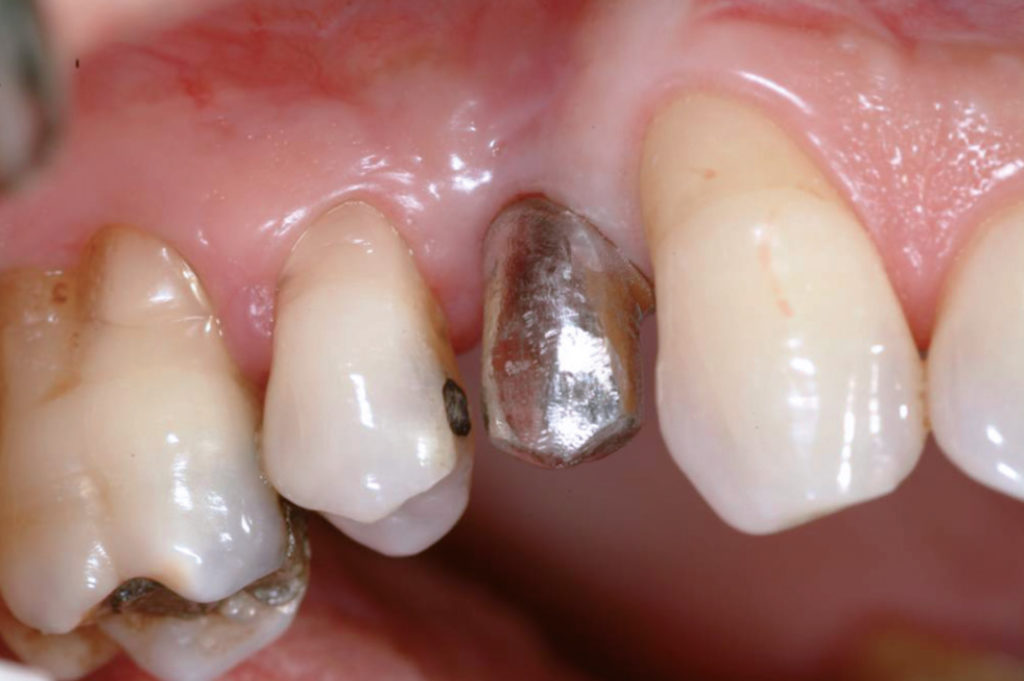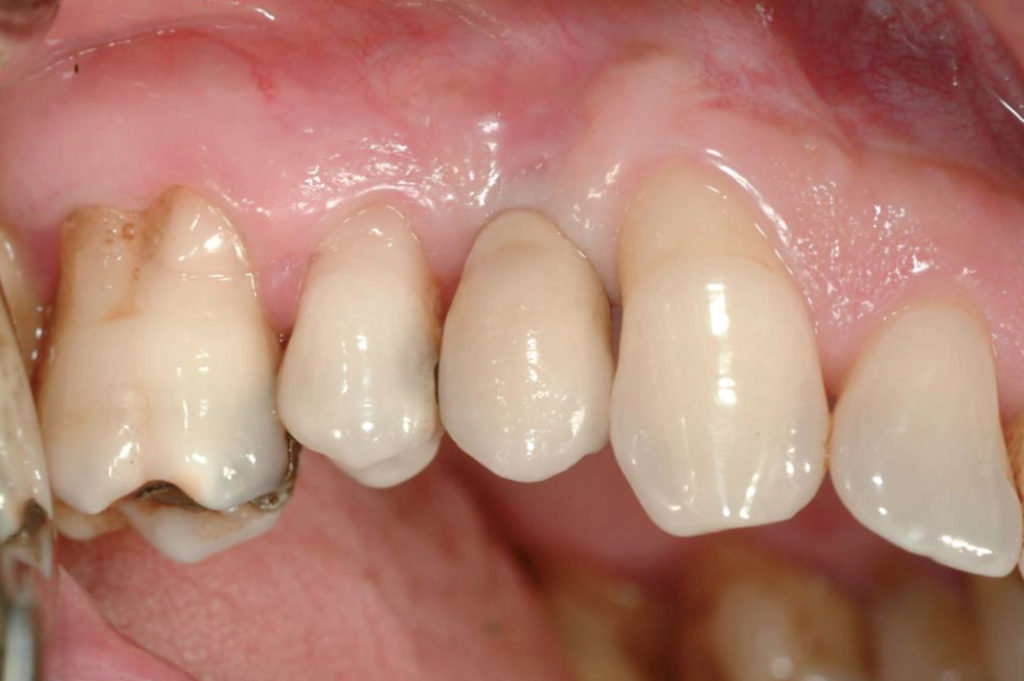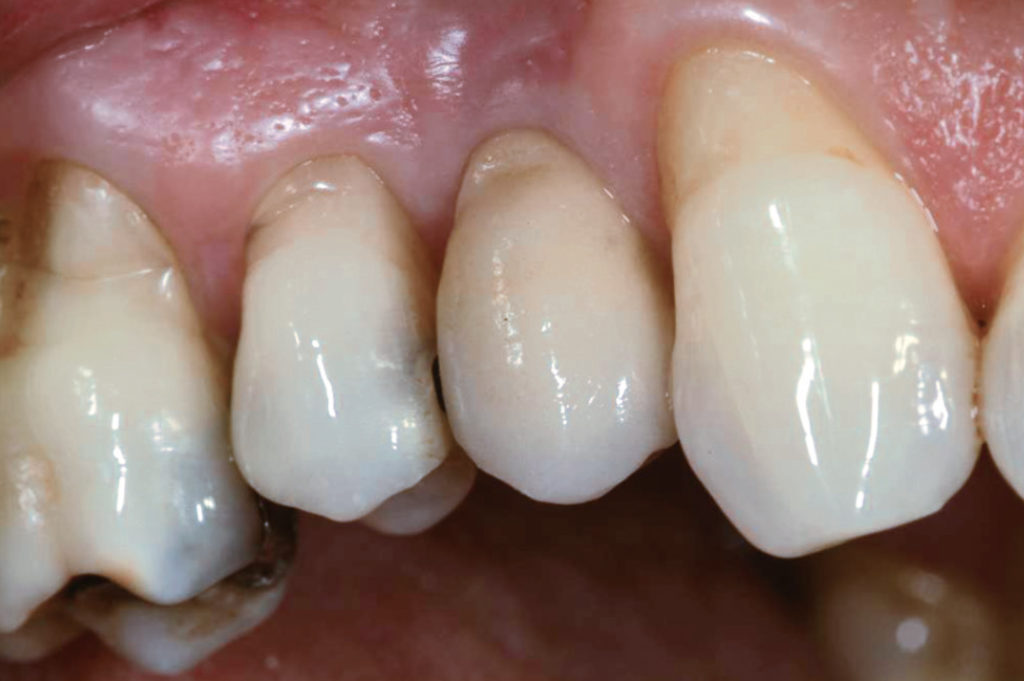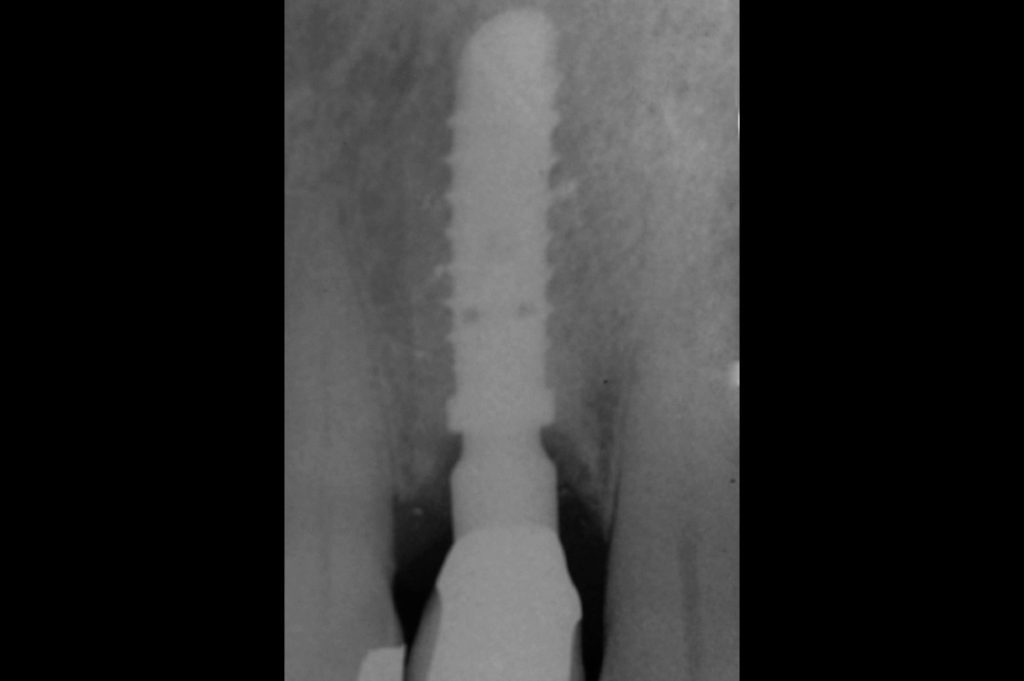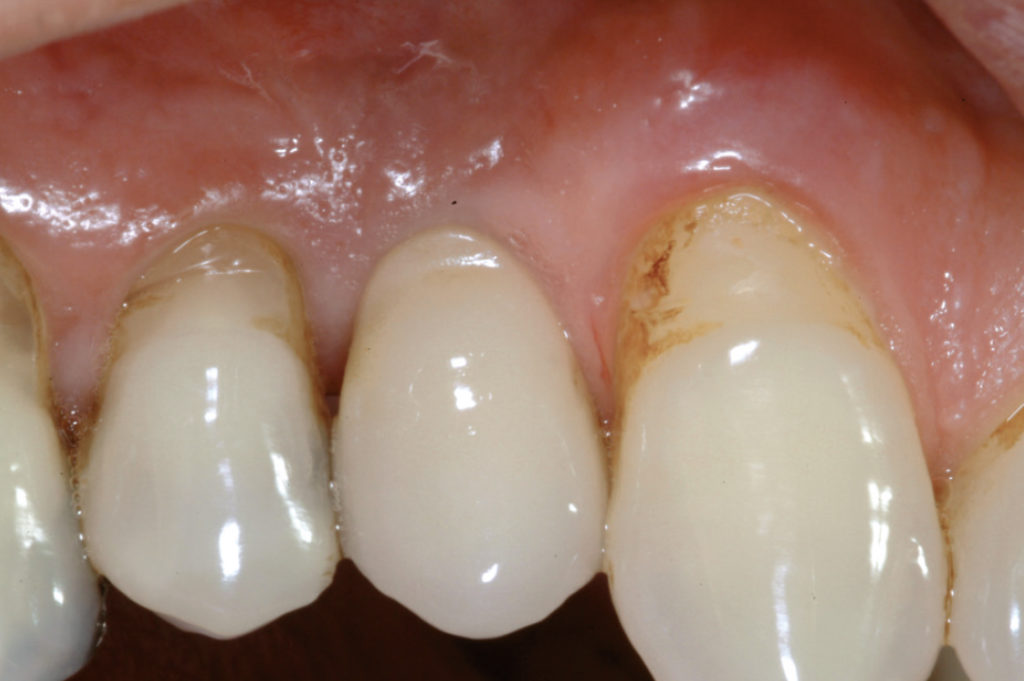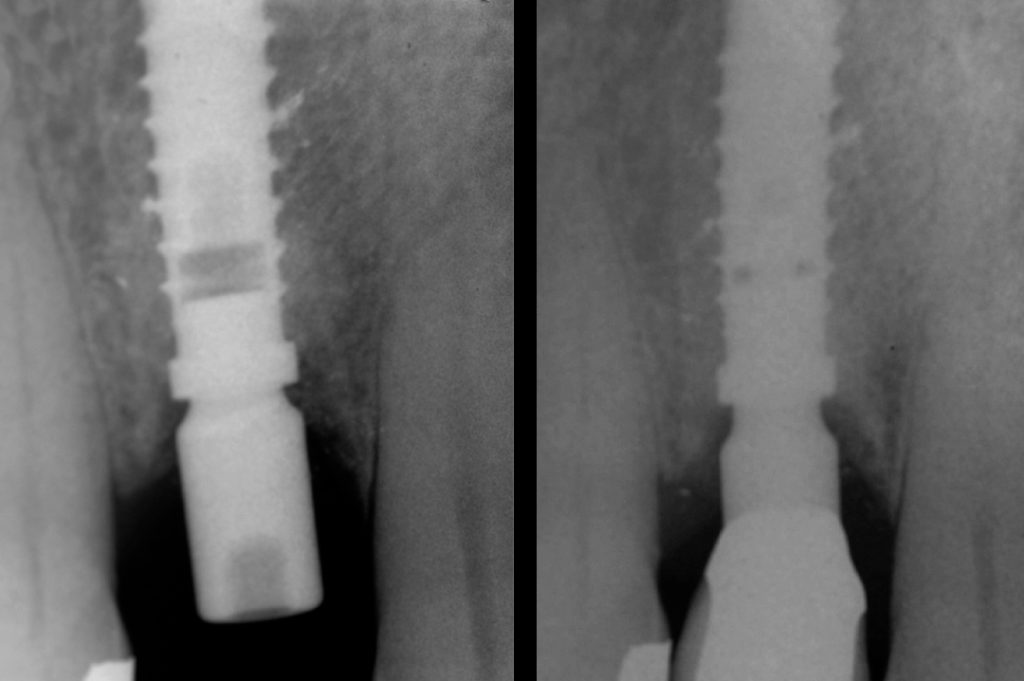Surgeon/Restorative dentist:
Dr. Leonardo Targetti – Florence, Italy
This case report demonstrates a procedure for restoring a missing maxillary first premolar with a severe buccal bone plate defect of a 55-year-old male patient. In order to expose the bone defect a GBR incision was performed and a full-thickness mucoperiosteal flap was raised. After thorough surgical debridement of the defect a 4.1 x 14 mm XCN Classix implant was placed about 3 mm subcrestally. A small hole was made in a collagen membrane in order to stabilize the membrane with a healing cap for a one-stage surgical procedure. The bone defect was filled with a mixture of autologous bone, harvested from the drills during preparation of the implant site, and a bone graft substitute. After six months of healing an implant level impression was taken and a cement-retained metal-ceramic crown was fabricated. In May 2016, twelve years after crown delivery, clinical and radiographic examination was performed. The clinical picture shows stable peri-implant soft tissue levels and aesthetics. The comparison of X-ray follow-up, at six months and at twelve years after crown delivery, demonstrates no crestal bone loss and reveals a gain in peri-implant crestal bone height.

Pre-operative clinical view 
GBR incision 
Full-thickness mucoperiosteal flap 
View of severe bone defect after surgical debridement 
Bone chips collected during implant bed preparation by low speed drilling without irrigation 
Insertion of 4.1 x 14 mm XCN Classix implant 
Implant insertion in a subcrestal position 
View of implant in its final position, about 3 mm subcrestally 
Creation of a small hole within the membrane 
Placement of a healing cap with a height of 7 mm in order to stabilize the membrane 
Placement of a healing cap with a height of 7 mm in order to stabilize the membrane 
Filling of the bone defect with a mixture of autologous bone and bone graft substitute 
View of the bone graft covered by the membrane 
Wound closure with interrupted sutures 
View of the healing cap after suturing 
Fifteen days post-operative clinical view 
Fifteen days post-operative clinical view 
Six months post-operative X-ray 
Six months post-operative clinical view 
Six months post-operative clinical view 
View of peri-implant soft tissues after removal of the healing cap 
Try-in of the prepared abutment 
Try-in of the metal structure 
Delivery of the cement-retained metal-ceramic crown 
Clinical situation four years after crown delivery 
Twelve-year X-ray follow-up 
Twelve-year clinical follow-up. Note stable peri-implant soft tissue levels and aesthetics 
Comparison of six-month and twelve-year X-ray follow-up. Note the gain in peri-implant crestal bone height
Laboratory:
Picchi, Perugi and Santoni, Danilo Petroni & C. – Florence, Italy


